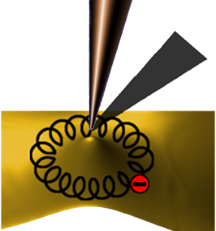Low-Temperature Scanning Tunneling Microscopy
Prof. Phillip First, Georgia Institute of Technology
Abstract

An introduction to the basic principles, key technological developments, and the advantages and challenges of cryogenic scanning tunneling microscopy. Associated tunneling spectroscopies, including differential conductance (“density of states”) mapping—with and without an applied magnetic field—will be discussed, as well as prospects for the future.
Biosketch

PHILLIP N. FIRST is a Professor in the School of Physics at the Georgia Institute of Technology, specializing in experimental condensed matter and materials physics, particularly studies of surfaces, interfaces, and nanostructures. He earned a B.S. degree in physics from the University of Wisconsin, an M.S. from the University of Illinois and a Ph.D. from the University of Illinois (1988). During a National Research Council Postdoctoral Associateship at NIST-Gaithersburg, First used scanning tunneling microscopy (STM) to study the metal-semiconductor interface, resolving metal-induced gap states for the first time and implementing a new technique for spin-polarization mapping in the field-emission mode of STM. Since joining the faculty of Georgia Tech in 1990, Professor First’s research has advanced the fields of ballistic electron emission spectroscopy, metal film growth by molecular-beam epitaxy, nanocrystal imaging and spectroscopy, and epitaxial graphene. In the latter field, he is co-inventor on the first patent for graphene electronics and co-author of several seminal papers including a Google “classic paper” based on citations spanning a decade. Currently, Professor First studies the electronic properties of 2D polymers and radiation effects in 2D and topological materials. His instructional contributions were recognized in 2017 when he was named a Hesburgh Teaching Fellow at Georgia Tech.
